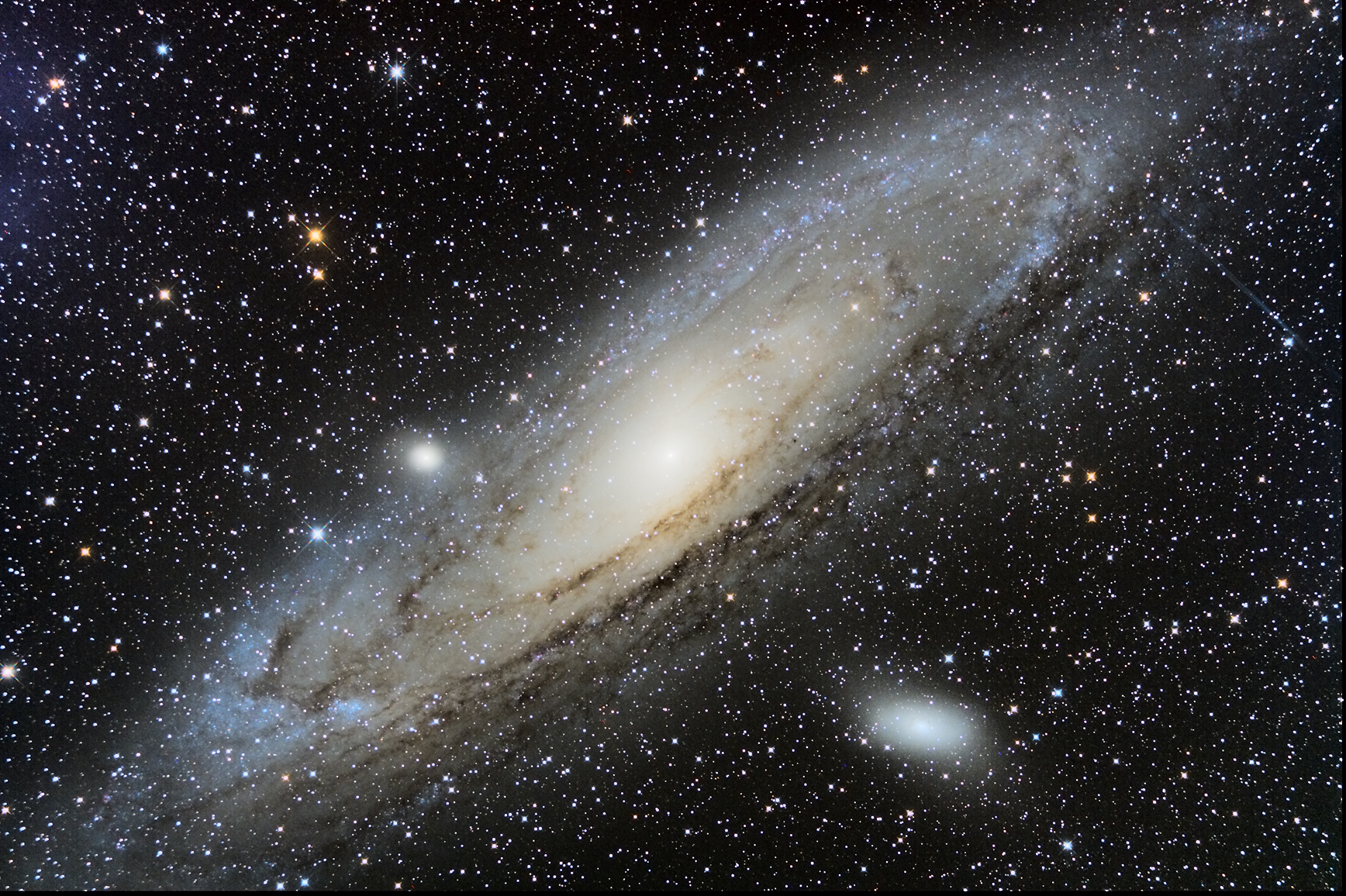Daily Image
04-07-2012M31 in HDR
| Submitter: | Albert van Duin |
| Description: | Displaying images of objects with a huge dynamic range is often difficult because the dynamic range of the camera is usually too small to capture the complete brightness range of the object. In 2006 I took an Image of M31 that shows this problem: http://www.astron.nl/dailyimage/main.php?date=20061219 The Canon 350D camera that was used has a dynamic range of 12 bits/pixel, so only 4096 intensity levels can be distinguished. When a long exposure is made to record faint nebulosity, the bright parts wil get overexposed and the cores of the galaxies and bright stars are washed out. When pixels are overexposed, brightness and colour information is lost. A way to work around this is to make some shorter exposures too, to acquire good images of the brighter parts. In the image above, 8 exposures each of 15, 30, 60, 120 and 420 seconds were combined using the High Dynamic Range (HDR) technique. The processing software that was used (PixInsight, http://pixinsight.com/) can automatically combine these seperate stacks to render a 64 bit dynamic range image, in which the overexposed parts of the longest exposures are replaced by well exposed parts of the shorter exposures. Since a computer display can show only about 40 intensity levels, this image is still hard to display in its linear form. Non-linear stretching and HDR Wavelet Transform (in PixInsight) were used to compress the contrast so virtually all detail present in the image can be viewed on a computer monitor. |
| Copyright: | Albert van Duin |
| Tweet |  |
